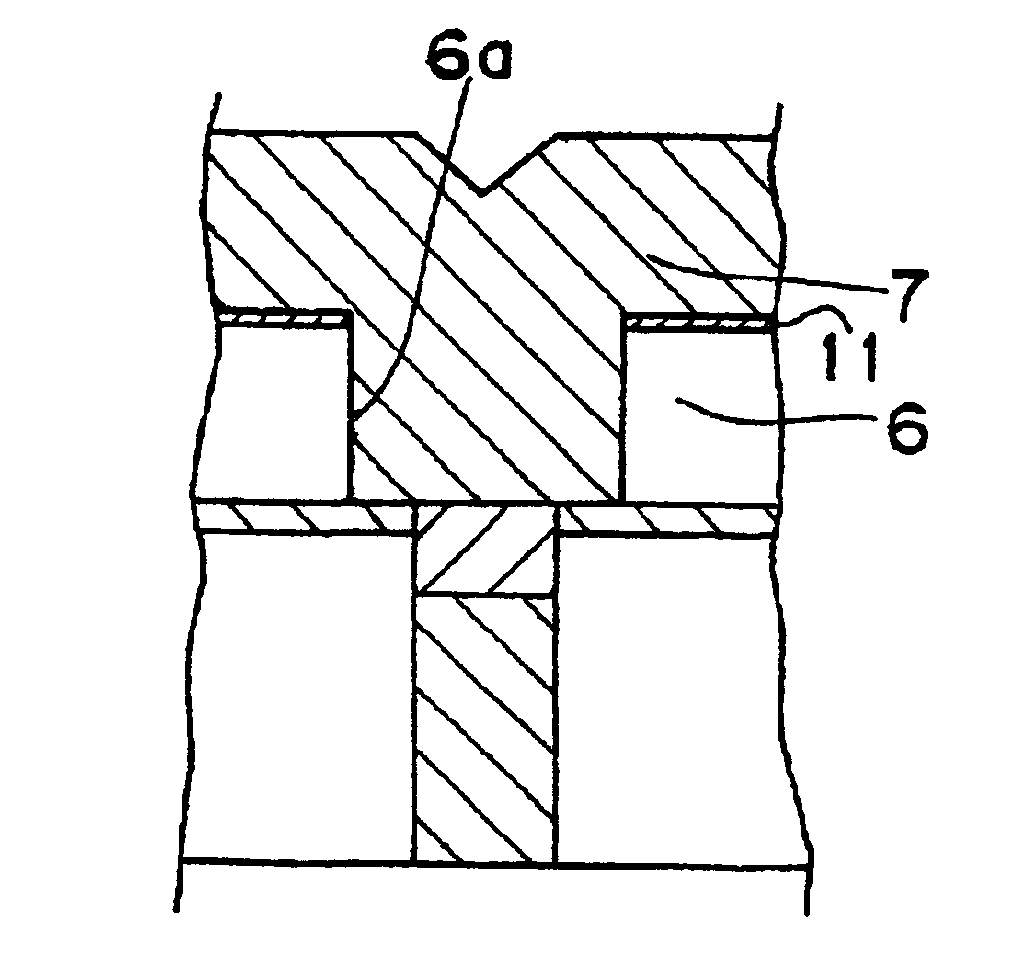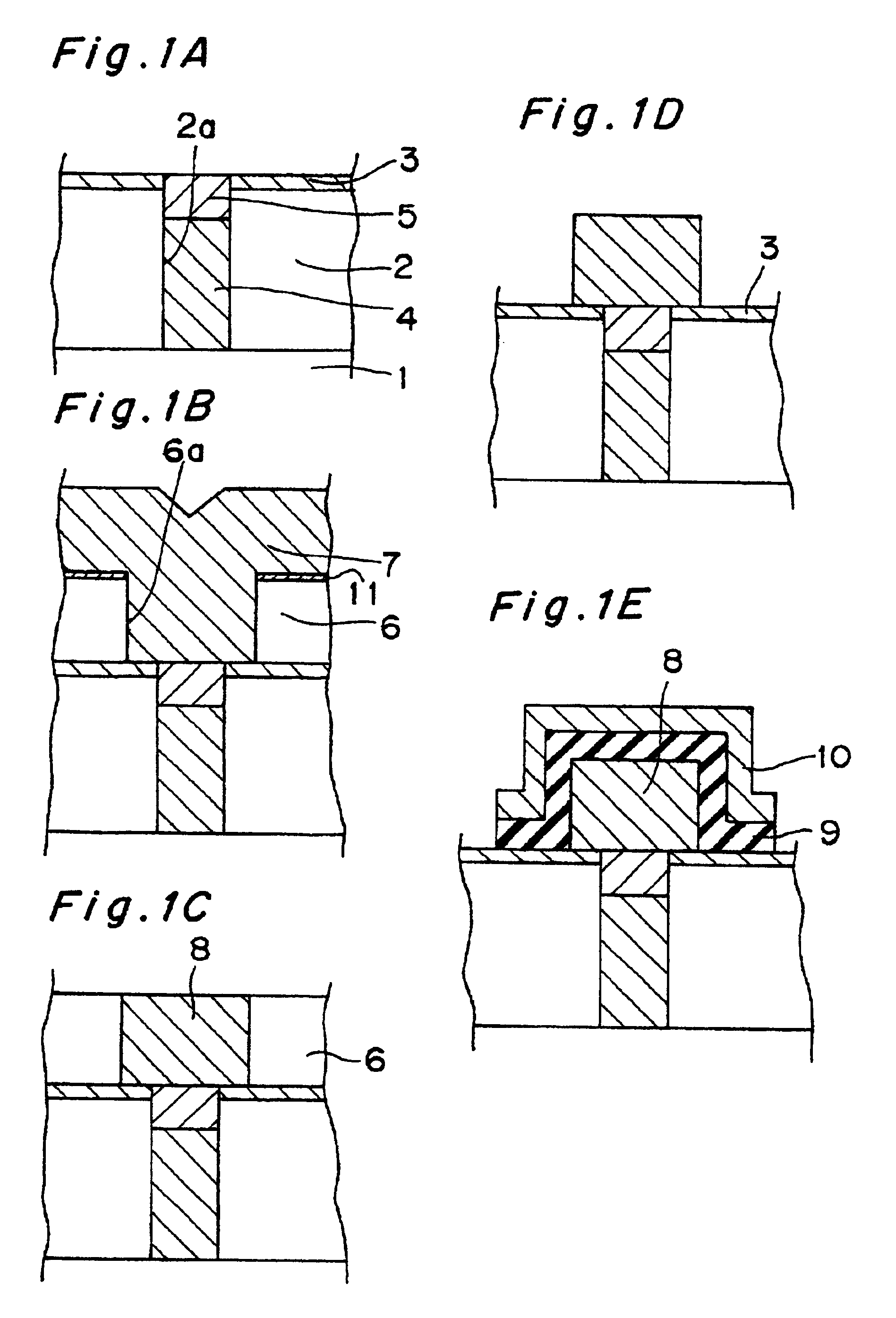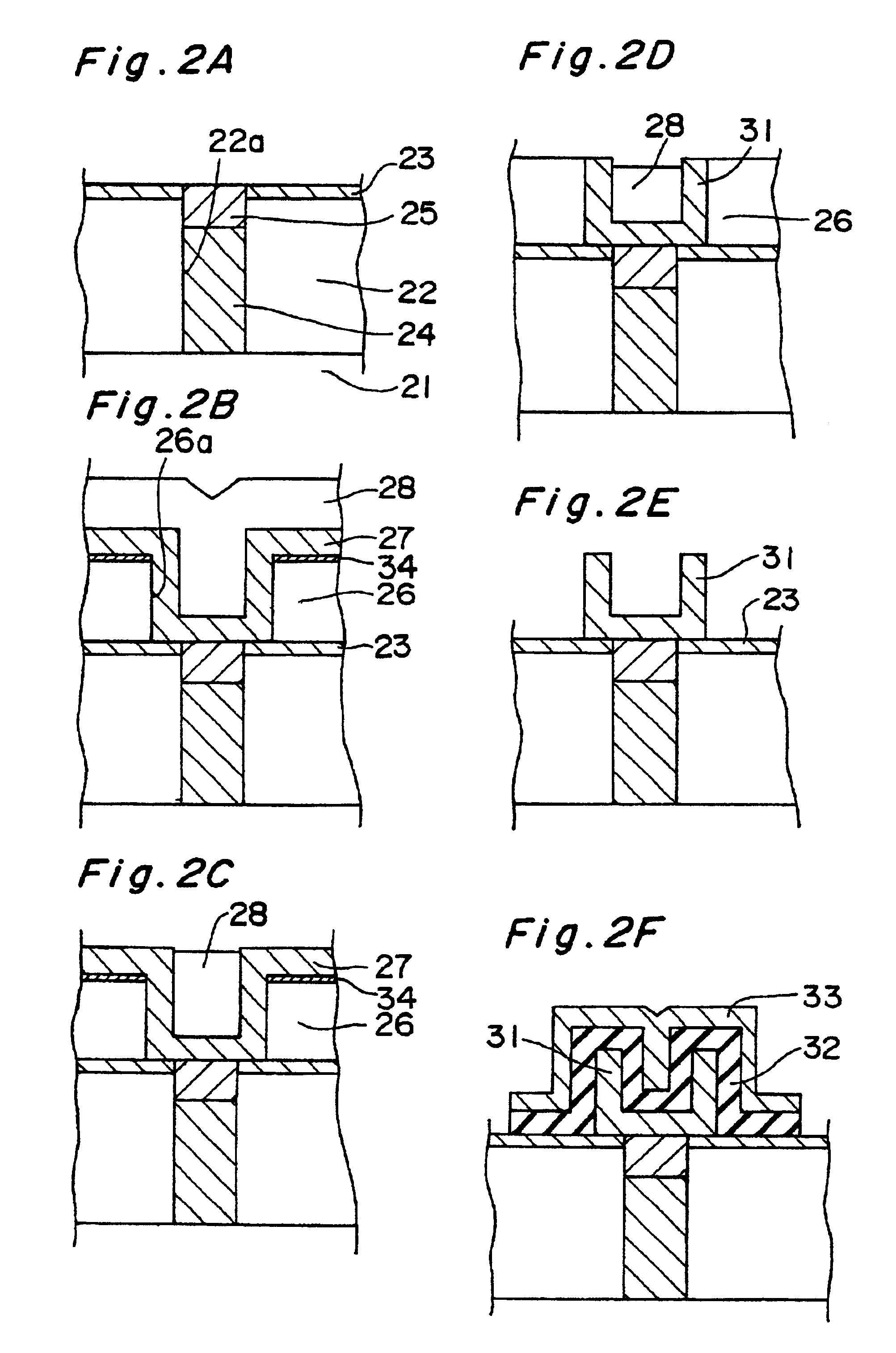Semiconductor device producing method and semiconductor device
a semiconductor and micro-scale technology, applied in semiconductor devices, capacitors, electrical equipment, etc., can solve the problems of low etching rate of conductive films, ferroelectric memory cells cannot have a sufficient capacitor area, and cannot achieve high packing densities or integration, etc., to achieve the effect of increasing packing densities
- Summary
- Abstract
- Description
- Claims
- Application Information
AI Technical Summary
Benefits of technology
Problems solved by technology
Method used
Image
Examples
first embodiment
[0053]FIGS. 1A through 1E are sectional views of essential parts, showing steps of a semiconductor device production process according to a first embodiment of the present invention.
[0054]As shown in FIG. 1A, Si02 is deposited on a silicon substrate 1 on which transistors (not shown) have been formed, to form an interlayer insulating film 2 having a thickness of about 1-1.5 μm Thereafter, TiO2, Al2O3 or SiN is deposited on the interlayer insulating film 2 to form an underlying barrier film 3 having a thickness of about 0.05-0.2 μm. The underlying barrier film 3 fundamentally serves to prevent the reaction between a ferroelectric film and the SiO2 film 2.
[0055]Next, after a contact hole 2a is formed in the interlayer insulating film 2 and the underlying barrier film 3, doped polysilicon is deposited to the thickness of about 0.1-0.5 μm over the entire surface of the substrate. Thereafter, the doped silicon is etched by a RIE (reactive ion etching) method until the doped silicon on th...
second embodiment
[0065]FIGS. 2A through 2F are sectional views of essential parts, showing steps of a semiconductor device production process according to a second embodiment of the present invention.
[0066]As shown in FIG. 2A, SiO2 is deposited on a silicon substrate 21 on which transistors (not shown) have been formed, to form an interlayer insulating film 22 having a thickness of about 1-1.5 μm. Thereafter, TiO2, Al2O3 or SiN is deposited on the interlayer insulating film 2 to form an underlying barrier film 23 having a thickness of about 0.05-0.2 μm. The underlying barrier film 23 fundamentally serves to prevent the reaction between a ferroelectric film and the SiO2 film 22.
[0067]Next, after a contact hole 22a is formed in the interlayer insulating film 22 and the underlying barrier film 23, doped polysilicon is deposited to the thickness of about 0.1-0.5 μm over the entire surface of the substrate. Thereafter, the doped silicon is etched by the RIE method until the doped silicon on the barrier f...
PUM
 Login to View More
Login to View More Abstract
Description
Claims
Application Information
 Login to View More
Login to View More - R&D
- Intellectual Property
- Life Sciences
- Materials
- Tech Scout
- Unparalleled Data Quality
- Higher Quality Content
- 60% Fewer Hallucinations
Browse by: Latest US Patents, China's latest patents, Technical Efficacy Thesaurus, Application Domain, Technology Topic, Popular Technical Reports.
© 2025 PatSnap. All rights reserved.Legal|Privacy policy|Modern Slavery Act Transparency Statement|Sitemap|About US| Contact US: help@patsnap.com



